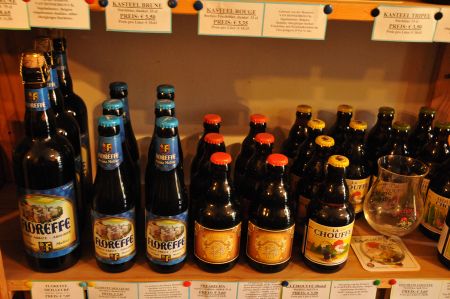Brunn am Gebirge - a tour with Robert
- Written by Portal Editor
Brunn am Gebirge - We had already mentioned Robert several times and reported about his various activities in regards to local cultural events and the promotion of education to adolescents.
Now Robert wanted to take the time to show his home town to us and explain about past and present. We closely followed his remarks, which extended far back into the past.
Brunn am Gebirge - Avar graves and Roman times
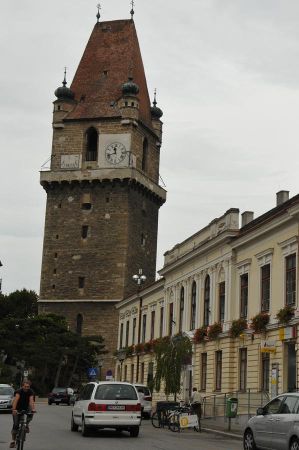 Excavations in Brunn am Gebirge are dating back to the Neolithic period, according to Robert, the area was inhabited as early as 6000 BC, and Brunn is thus the oldest known agricultural settlement in Austria.
Excavations in Brunn am Gebirge are dating back to the Neolithic period, according to Robert, the area was inhabited as early as 6000 BC, and Brunn is thus the oldest known agricultural settlement in Austria.
The dating of the Neolithicum in the central alpine region took place due to the settlements left in the northern part of the town, found in the early 1990s.
Even graves of Aware tribes, found in Mödling, suggest, that at that time the area was already inhabited.
Due to excavations, it is assumed that there was a veteran settlement in the Roman era.
The present town center was built around 1000, and it was called Prun, Prunni or Brun, which means as much as "wells". In the 12th century Prunni was mentioned in a gift certificate for the first time.
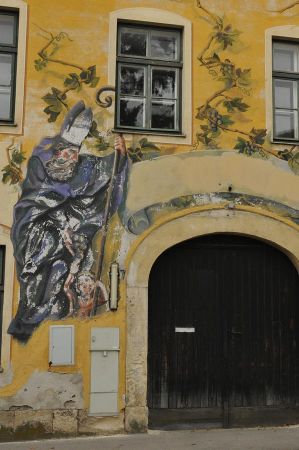 Around 1500, Brunn built a wall around the town that lasted for 300 years.
Around 1500, Brunn built a wall around the town that lasted for 300 years.
The beer brewing tradition in Brunn am Gebirge began in 1790 in form of a small brewery.
In 1847 the 19 hectare "Brunner-Brewery-Stock-Company" was established, which rose to one of the largest breweries of the time. More then 200 employees brewed more than 200,000 hl per year in different varieties.
In 1929, the Brunner brewery was sold to the Brau Union, then to the Liesing brewery, and ceased to exist as a company of its own.
A few pieces in the brewery museum in Brunner's home are witnesses from this time.
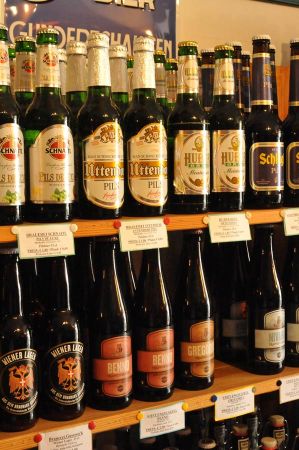 Since 2010, however, Brunn has started brewing again with the "Bierzauberei", a small specialty brewery. As a result of the increased interest in the beer, the "Brunner Bierkirtag" was reissued, but without great success. In 2012, "Lower Austria's largest Oktoberfest" took place on the grounds of the Business Park Campus21, but this had nothing to do with Brunner beer, but was sponsored by an Austrian beer company.
Since 2010, however, Brunn has started brewing again with the "Bierzauberei", a small specialty brewery. As a result of the increased interest in the beer, the "Brunner Bierkirtag" was reissued, but without great success. In 2012, "Lower Austria's largest Oktoberfest" took place on the grounds of the Business Park Campus21, but this had nothing to do with Brunner beer, but was sponsored by an Austrian beer company.
Rudolf Steiner lived in the so-called "Geschwisterhof" until his appointment to Weimar as editor of Goethe's scientific writings in the Weimar edition (Sophien edition).
There he also wrote the introductions to Goethe's books on natural sciences in Joseph Kürschner's National Literature as well as the basic lines of a theory of knowledge of the Goethean world view.
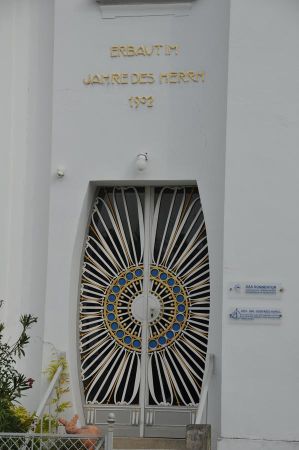 The Church of Brunn am Gebirge has a remarkable floor plan, which is similar to the first Goetheanum designed by Rudolf Steiner, a monumental wooden building in Dornach in the Canton of Solothurn in Switzerland. It is said to have been erected by the master builders of St. Stephen's Cathedral in Vienna.
The Church of Brunn am Gebirge has a remarkable floor plan, which is similar to the first Goetheanum designed by Rudolf Steiner, a monumental wooden building in Dornach in the Canton of Solothurn in Switzerland. It is said to have been erected by the master builders of St. Stephen's Cathedral in Vienna.
The Jugendstil row houses in Brunn are considered the most uniform ensemble in the style of the Viennese Secession. Lot of things to see and visit in Brunn am Gebirge.
Please read as well:
History Travel in the Capital of Arts
Thessalonica at the time of Byzantines
-
 Brunn am Gebirge - City Hike
Brunn am Gebirge - City Hike
Brunn am Gebirge - City Hike
Brunn am Gebirge - City Hike
-
 Brunn am Gebirge - City Hike
Brunn am Gebirge - City Hike
Brunn am Gebirge - City Hike
Brunn am Gebirge - City Hike
-
 Brunn am Gebirge - City Hike
Brunn am Gebirge - City Hike
Brunn am Gebirge - City Hike
Brunn am Gebirge - City Hike
-
 Brunn am Gebirge - City Hike
Brunn am Gebirge - City Hike
Brunn am Gebirge - City Hike
Brunn am Gebirge - City Hike
-
 Brunn am Gebirge - City Hike
Brunn am Gebirge - City Hike
Brunn am Gebirge - City Hike
Brunn am Gebirge - City Hike
-
 Brunn am Gebirge - City Hike
Brunn am Gebirge - City Hike
Brunn am Gebirge - City Hike
Brunn am Gebirge - City Hike
-
 Brunn am Gebirge - City Hike
Brunn am Gebirge - City Hike
Brunn am Gebirge - City Hike
Brunn am Gebirge - City Hike
-
 Brunn am Gebirge - City Hike
Brunn am Gebirge - City Hike
Brunn am Gebirge - City Hike
Brunn am Gebirge - City Hike
-
 Brunn am Gebirge - City Hike
Brunn am Gebirge - City Hike
Brunn am Gebirge - City Hike
Brunn am Gebirge - City Hike
-
 Brunn am Gebirge - City Hike
Brunn am Gebirge - City Hike
Brunn am Gebirge - City Hike
Brunn am Gebirge - City Hike
-
 Brunn am Gebirge - City Hike
Brunn am Gebirge - City Hike
Brunn am Gebirge - City Hike
Brunn am Gebirge - City Hike
-
 Brunn am Gebirge - City Hike
Brunn am Gebirge - City Hike
Brunn am Gebirge - City Hike
Brunn am Gebirge - City Hike
-
 Brunn am Gebirge - City Hike
Brunn am Gebirge - City Hike
Brunn am Gebirge - City Hike
Brunn am Gebirge - City Hike
-
 Brunn am Gebirge - City Hike
Brunn am Gebirge - City Hike
Brunn am Gebirge - City Hike
Brunn am Gebirge - City Hike
-
 Brunn am Gebirge - City Hike
Brunn am Gebirge - City Hike
Brunn am Gebirge - City Hike
Brunn am Gebirge - City Hike
-
 Brunn am Gebirge - City Hike
Brunn am Gebirge - City Hike
Brunn am Gebirge - City Hike
Brunn am Gebirge - City Hike
-
 Brunn am Gebirge - City Hike
Brunn am Gebirge - City Hike
Brunn am Gebirge - City Hike
Brunn am Gebirge - City Hike
-
 Brunn am Gebirge - City Hike
Brunn am Gebirge - City Hike
Brunn am Gebirge - City Hike
Brunn am Gebirge - City Hike
https://www.alaturka.info/en/austria/vienna/3573-brunn-am-gebirge-a-tour-with-robert#sigProId7a17fa462c
